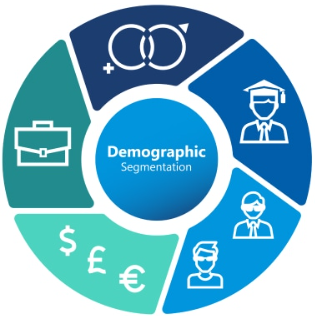In the dynamic world of business, the key to staying ahead lies in knowing your customers. Market segmentation is a powerful strategy that allows businesses to break down a broad market into smaller, more manageable segments. This approach not only enhances marketing effectiveness but also ensures that businesses can cater to the unique needs of different customer groups.
The Strategic Importance of Market Segmentation
Market segmentation is not just about categorizing customers; it’s about understanding them on a deeper level. By segmenting the market, businesses can develop targeted marketing campaigns that resonate with specific audiences. This personalized approach can lead to higher customer satisfaction, stronger brand loyalty, and ultimately, increased profitability.
Diverse Methods of Market Segmentation
Market segmentation can be approached in various ways, each providing different insights into the target audience. While there are many methods, four primary types of segmentation are most commonly used:
- Demographic:
Demographic segmentation is a widely used method that categorizes consumers based on attributes like age, gender, income, education, and occupation. While it offers a broad overview of the market, it is essential to remember that demographics alone may not capture the full complexity of consumer behavior. For example, while a luxury car brand might target high-income individuals, it must also consider their preferences and values.

- Psychographic :
Moving beyond demographics, psychographic segmentation delves into the psychological aspects of consumer behavior. It examines attitudes, values, interests, and lifestyles to identify specific segments within a market. This method enables brands to connect with consumers on a more emotional level. For instance, a brand promoting eco-friendly products would target environmentally conscious consumers who prioritize sustainability in their purchasing decisions.

- Behavioral :
Understanding how consumers interact with a brand is crucial. Behavioral segmentation focuses on consumer actions, such as purchasing patterns, brand loyalty, and product usage. By analyzing this behavior, businesses can identify which customers are most likely to convert and develop strategies to engage them further. For example, an e-commerce platform might offer personalized recommendations based on a user’s browsing history to increase sales.

4. Geographic : Geography plays a significant role in shaping consumer preferences. Geographic segmentation involves dividing the market based on location, such as country, region, or city. However, it’s not just about physical location; cultural factors, climate, and even urbanization levels can influence buying decisions. A clothing brand, for example, might market winter coats more aggressively in colder regions compared to warmer areas.

Conclusion: The Power of Market Segmentation
Market segmentation is a versatile tool that enables businesses to refine their marketing strategies and better serve their customers. By leveraging demographic, psychographic, behavioral, and geographic insights, companies can create more personalized and impactful campaigns. In a competitive market, the ability to understand and meet the specific needs of different customer segments can be the difference between success and failure.
In today’s highly competitive landscape, understanding your market segments is more crucial than ever. ProPS offers market segmentation solutions that empower businesses to accurately identify and target their most valuable customer groups. By leveraging data-driven insights and analytics, ProPS helps you craft personalized marketing strategies that resonate with your audience, ultimately driving growth and enhancing customer loyalty.
